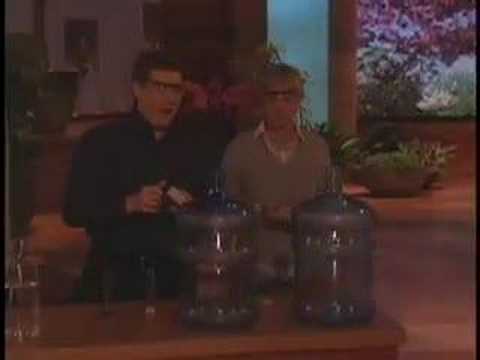Blowing Up Eggs With Hydrogen
What’s Steve doing now? ► https://linktr.ee/stevespangler
Other Channels…
The Spangler Effect ► https://www.youtube.com/user/TheSpanglerEffect
Spangler Science TV ► https://www.youtube.com/user/SpanglerScienceTV
Follow Steve’s Daily Posts on…
INSTAGRAM ► https://www.instagram.com/stevespangler/
FACEBOOK ► https://www.facebook.com/stevespangler
TIKTOK ► https://www.tiktok.com/@stevespangler
Steve Spangler is a bestselling author, STEM educator and Emmy award-winning television personality with more than 2,100 television appearances to his credit. Steve appeared as a regular guest on the Ellen DeGeneres Show from 2007-2022. Learn more about Steve at https://stevespangler.com/about-steve-spangler/
Watch Steve’s syndicated television series ► https://bit.ly/2KaO0fT
The SICK Science® series was created by Steve Spangler.
© 2010 Steve Spangler, Inc. All Rights Reserved.
SICK Science is a registered trademark of Steve Spangler, Inc. Reg. No. 4,398,849





That’s sick as.
The Hindenburg disaster was an airship accident that occurred on May 6, 1937, in Manchester Township, New Jersey. The LZ 129 Hindenburg (Luftschiff Zeppelin #129; Registration: D-LZ 129) was a German commercial passenger-carrying rigid airship, the lead ship of the Hindenburg class, the longest class of flying machine and the largest airship by envelope volume. It was designed and built by the Zeppelin Company (Luftschiffbau Zeppelin GmbH) and was operated by the German Zeppelin Airline Company (Deutsche Zeppelin-Reederei). It was named after Field Marshal Paul von Hindenburg, who was President of Germany from 1925 until his death in 1934. It caught fire and was destroyed during its attempt to dock with its mooring mast at Naval Air Station Lakehurst. The accident caused 35 fatalities (13 passengers and 22 crewmen) from the 97 people on board (36 passengers and 61 crewmen), and an additional fatality on the ground.
Well if we fill it with nitrogen and seal it up will it float in the air ?
I guess you could say that the egg eggsploded
Was I supposed to learn something?
Eggs are like my ex wife
ill do a robery with them hand up i got eggs.
they explode
Trump?
next make a rocket ship with a egg
And thats how hydrogen bomb works…💀
When i was a kid I used to love your channel on tv
You didnt have to add the egg squirt noise, thats uncalled for
Well that was the worst audio I've heard in my life
Why
The eggs 9 months later: 🐣